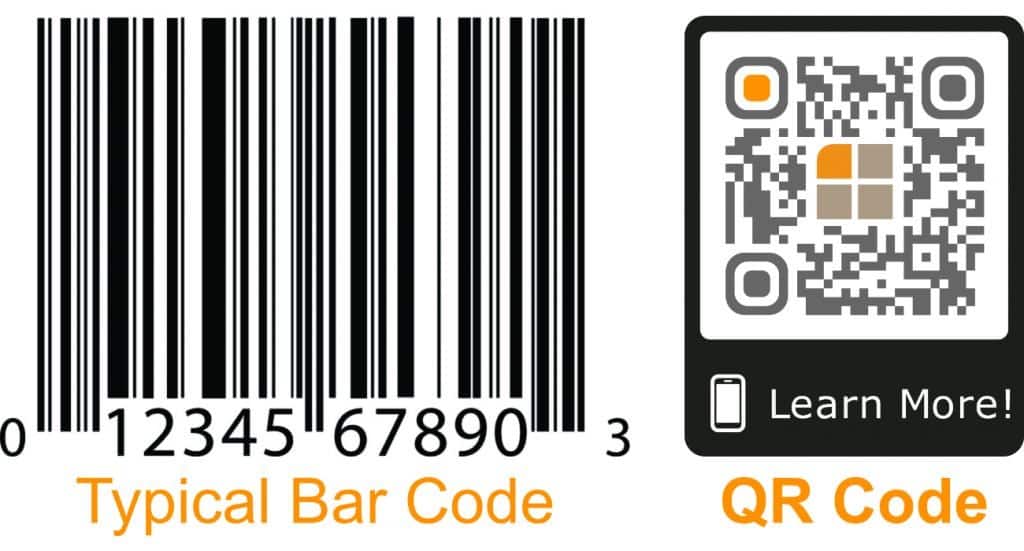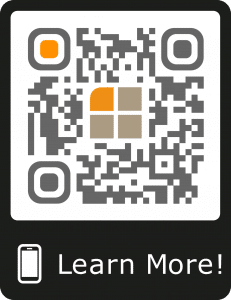Authentic Engagement: AI-Driven Chatbots for Higher Education
Explore how AI-driven chatbots enhance authentic student engagement without losing your human touch.
Marketing Strategies
QR codes are growing in popularity. But should higher ed marketers use QR codes in their marketing strategies? I definitely think so. Here’s why.
Like barcodes, QR codes are symbols that convey information to computers visually. And like a barcode, QR codes require an application to read and translate the data for the computer.
This is what happens each time you or the clerk scans a barcode at the store. The scanner reads the code and translates it into the product information and price you see on the screen.

Go ahead and scan the QR code in this picture with your smartphone! If you have an iPhone, all you have to do is take a picture of it.
But the limitations of barcodes (which could only hold about 30 alphanumeric characters) created problems for retailers in Asia who needed codes that could contain Chinese and Japanese characters as well as Roman alpha characters.
Thus, the QR code was born and released in 1994.
It was called the “Quick Response” code because although it could hold up to 7,000 numerals, it could be read more than 10 times faster than other codes, even if the scanner were held at different angles.
You might remember seeing QR codes everywhere for a brief time around 2011 to 2012. But then, they suddenly began to disappear.
Despite all the technical benefits of QR codes, there were some major problems with making this a viable marketing tool.
For one, many people didn’t know what these black and white block images were for or how to use them.
Secondly, you had to download a QR reader app from the Apple or Google app stores. While this only took minutes, many people didn’t know how to do it or didn’t want to deal with another app on their phone.
And then, what app did you choose? Was one better than the other? It was just a hassle.
Thirdly, most stores and public places in the early 2000’s and all the way to the 2010’s did not have public WiFi access. If you didn’t have a lot of cell data, it just wasn’t worth it.
And the last and most important reason they kind of disappeared is because most marketers just didn’t give people a good reason to download the scanner app and scan the code.
Many of them sent mobile users to a home page or other generic site that wasn’t very helpful, creative, or relevant. More on this later.
For all of those reasons, QR codes looked like they were going to be lost to tech history as just a fad.
But it wasn’t a fad. QR codes never actually went away. They were just not being used in visible, consumer marketing like they were in the early 2010’s.
QR codes kept being used extensively in packaging, logistics, and other industrial applications where information on individual products and packages needed to be scanned at various points across the supply chain.
However, Apple has recently released an iOS update that includes an active QR reader in the camera app. That means over 50% of the 1 billion iOS devices out there now have the ability to read QR codes natively.
This has opened the door for a big QR-code comeback in marketing of all kinds.
No longer do people have to figure out where to get a QR code reader or how they work. The technology is now embedded in the operating system so that it’s just a matter of taking a picture of the code.
QR codes have numerous marketing benefits that higher ed marketers can take advantage of.
Companies like Facebook, Snapchat, Instagram, Spotify, Twitter, and Kik have been marketing using QR codes for some time now. Many of these are platforms where large portions of your audience are hanging out.
Just look at the kinds of information you can encode in a QR code with over 7,000 characters. It’s a really long list!
QR codes can be easily scanned on many different surfaces. Pretty much any surface you can take a picture of with your phone.
Each QR code is unique, making it easy to track when they are scanned by your audience. By tracking your QR codes, you can literally see which locations, surfaces, and times produce the most traffic from your various campaigns.
Think of it. You can now track the metrics on your billboards and other print campaigns!
By their nature, QR codes come with a promise: “Scan me and I’ll show you something you’ll like!” If you place a QR code next to a picturesque view of your campus, people will scan it to find out what more they can learn about dorm life, cafeteria and food options, student activities, etc. They don’t know exactly what they’ll find, but the promise is there.
I hope your head is already spinning with the possibilities QR codes have for your higher education marketing strategies. But here are some suggestions you should keep in mind as you implement them.
Every QR code holds the promise of something fun, useful, or creative on the other side. Your prospective student or family is choosing to interact with your marketing message by getting their phone out of their pocket and scanning the code.
So make sure they’re not disappointed when they arrive at wherever you’re sending them!
Don’t send people to your homepage from a QR code. This needs to be a highly personalized, unique experience that ties in to the marketing message from which they’re scanning the code.
Take a look at how this museum in Poland used QR codes to attract young people to their museum.
Not every QR code needs to link to something this spectacular to be effective.
The takeaway here is that the museum marketers had thought carefully about the experience people would have when they scanned the code.

Scan me for a special message!
At the very least, your QR codes should be relevant to the marketing message on which they’re placed. So if the QR code is next to a picture of your campus, they should find more information about your campus or campus life waiting on the other side.
If the QR code is next to a message about how affordable you are, then the code should send them to information about financial aid or something like that.
Make each QR code part of a unique and relevant marketing micro-campaign.
Right now, QR codes are still on the edge of technology and therefore, a part of youth culture. You’ve got to get a little creative on this.
That’s why I love the idea of temporarily tattooing a QR code onto your enrollment representatives’ arm or head before they head out to a high school recruiting event. It’s zany, fun, and stands out from the other colleges and universities.
If the prospective student scans a code on your enrollment rep’s temporarily tattooed arm, make sure they go to a landing page that offers them something in exchange for the action you want them to take.
Also, integrate personalized messaging or video to give prospective students a unique experience with your education brand. It could be a video testimonial from a current student like your prospective student.
So yes, higher ed marketers should seriously consider using QR codes in their marketing strategies.
But don’t do it unless you’re ready to get a little creative and create unique interactions for your prospective students.
Then you’ve got to know how to write for the web. That’s why we want to send you our latest ebook: Writing for the Web: 7 Secrets to Content Marketing Success for Education Marketers!
With this helpful resource from Caylor Solutions, you’ll learn how to:
In short, you’ll be able to write the copy that makes your digital marketing strategy work for you.
Featured image by Bloomicon via Adobe Stock
Subscribe to The Higher Ed Marketer podcast today!